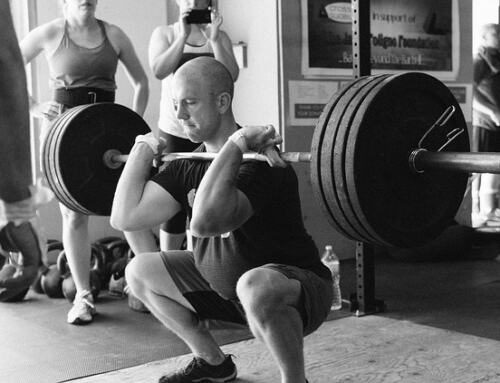How To Keep Exercising Despite Chronic Pain
Pain is a great excuse if you don’t like to exercise, and it’s certainly something many people with chronic pain would just as soon avoid.
Yet at the same time exercise is one of the things that can help make that pain go away.
“It can become a Catch-22 situation,” says Dr. Victor M. Romano, a board certified orthopedic surgeon and author of Finding The Source: Maximizing Your Results – With and Without Orthopedic Surgery.
“We don’t want to exercise because we have pain, and yet exercise will usually help you reduce the pain over the long run.”
Research has shown that exercise is an essential aspect in the treatment of chronic pain. Lack of exercise can cause a downward cycle of deconditioning and worsening pain. But exercise can help those with chronic pain engage in enjoyable and essential activities of daily living with greater ease. Stretching, cardio exercise and weight lifting are the three types of exercise most people should include in every workout, Romano says.
Doctors generally ask patients to rate their pain on a scale of one to 10. The average intensity of pain experienced for 12 or more hours over a 24-hour period is considered their baseline pain. Romano says if, during exercise, pain levels increase by more than 2 points from the baseline you should stop and modify that exercise to ensure you do not cause a flare up of your pain.
Of course, a good diet is also important.
For people who suffer from chronic pain, Dr. Romano offers these exercise tips:
- Try shorter exercise periods. It is better to exercise in short bursts than in one long workout. Even five minutes is better than
 nothing. Everything counts.
nothing. Everything counts. - Weight training is also important for seniors and women. Research has proven that weight training is good for everyone, regardless of sex or age. Make sure to incorporate it into your exercise program.
- Stretching is important. Go online and find some good stretching exercises and incorporate them into your daily routine, even if you don’t exercise that day.
- Try yoga or tai chi. These programs have shown success with people with chronic pain.
- Mind over matter. If you need to do an exercise that you know is going to be painful, start by taking some deep breaths and focus your energy. Take your time.
“Even though exercise for somebody with chronic pain sounds counter-intuitive,” Romano says, “it is very important as part of recovery therapy.”
Get to the Root of Your Chronic Pain
Shifting the focus from how to endure chronic pain to why it persists is a pivotal step. Instead of resigning to its presence, consider the potential of addressing its root causes. Often, seemingly insurmountable discomfort can be alleviated by implementing subtle modifications. Recognize the five perpetuating factors that, once rectified, hold the promise of dissipating your chronic pain. Embrace the opportunity for transformation and take control of your well-being.
These perpetuating factors are:
- Different leg lengths– Having uneven leg lengths, a condition known as leg length discrepancy (LLD), can potentially lead to chronic pain and discomfort. When one leg is shorter than the other, it can disrupt the body’s natural alignment and balance. This misalignment can put additional stress on the muscles, joints, and spine, leading to issues such as hip pain, back pain, knee pain, and even problems with posture. Over time, this strain can result in chronic pain as the body struggles to adapt to uneven leg lengths. Treatment options may include orthotic shoe inserts, physical therapy, and in some cases, surgical intervention to address the imbalance and alleviate the associated chronic pain.
- Small Hemipelvis– A small hemipelvis, a condition where one side of the pelvis is smaller than the other, can contribute to chronic pain by disrupting the body’s structural alignment. This imbalance can lead to uneven distribution of weight and stress on the spine, hips, and lower back. The body’s attempt to compensate for this size difference can strain muscles, ligaments, and joints, potentially causing chronic pain and discomfort. Over time, the persistent stress on these structures can result in chronic pain conditions such as sciatica, hip pain, and lower back pain. Management of such pain often involves a combination of physical therapy, pain medication, and sometimes surgical interventions to address the underlying hemipelvic asymmetry and alleviate the resulting chronic pain.
- Vitamin and mineral deficiency– A deficiency in essential vitamins or minerals can lead to chronic pain by disrupting various physiological processes critical for maintaining healthy nerves, muscles, and connective tissues. For instance, a deficiency in vitamin D can impact bone health and muscle function, potentially resulting in chronic musculoskeletal pain. Inadequate levels of vitamin B12 may lead to nerve damage, causing neuropathic pain that persists over time. Similarly, a lack of magnesium can affect muscle relaxation and nerve transmission, contributing to chronic pain conditions such as muscle cramps and tension. Addressing these deficiencies through proper nutrition, supplementation, and medical guidance can play a crucial role in managing and potentially alleviating chronic pain associated with vitamin or mineral imbalances.
- Dehydration– Chronic dehydration can lead to chronic pain by impacting various bodily functions. Inadequate hydration can result in reduced blood flow and oxygen delivery to tissues, which can lead to muscle stiffness, cramps, and discomfort. Dehydrated joints may experience increased friction and wear, contributing to joint pain. Additionally, dehydration can affect the body’s ability to flush out toxins, potentially leading to inflammation that triggers or exacerbates pain. Proper hydration is essential for maintaining the health of muscles, joints, and other bodily systems, and addressing chronic pain related to dehydration may require increasing fluid intake, improving electrolyte balance, and adopting a consistent hydration regimen.
- Posture– Poor posture can contribute to chronic pain by placing excessive strain on muscles, ligaments, and joints. When the body is consistently held in an improper alignment, certain muscle groups may become overused and others underused, leading to muscular imbalances. These imbalances can lead to chronic pain in areas such as the neck, shoulders, back, and hips. Additionally, poor posture can compress spinal discs and increase pressure on nerves, resulting in conditions like herniated discs and sciatica. Over time, these effects can culminate in chronic pain as the body struggles to maintain a compromised alignment. Addressing chronic pain related to poor posture often involves adopting ergonomic practices, practicing exercises to strengthen core muscles, and seeking physical therapy to retrain posture and alleviate discomfort.
Experience relief from chronic pain through the healing power of massage. A soothing touch, expertly administered, has the ability to alleviate tension, reduce inflammation, and improve blood circulation, all of which are essential for managing and even conquering persistent discomfort. Whether you’re battling lower back pain, tension headaches, or muscle stiffness, massage therapy can be a natural and effective solution. Don’t let chronic pain hold you back any longer – take a step towards rejuvenation and relief. Schedule a massage session at Body Ache Escape Massage Center today and embark on a journey to a healthier, pain-free you. Your body deserves this escape from pain, and our skilled therapists are here to guide you towards lasting comfort and wellness.
Click here to view original web page at www.livingbetter50.com


 nothing. Everything counts.
nothing. Everything counts.




